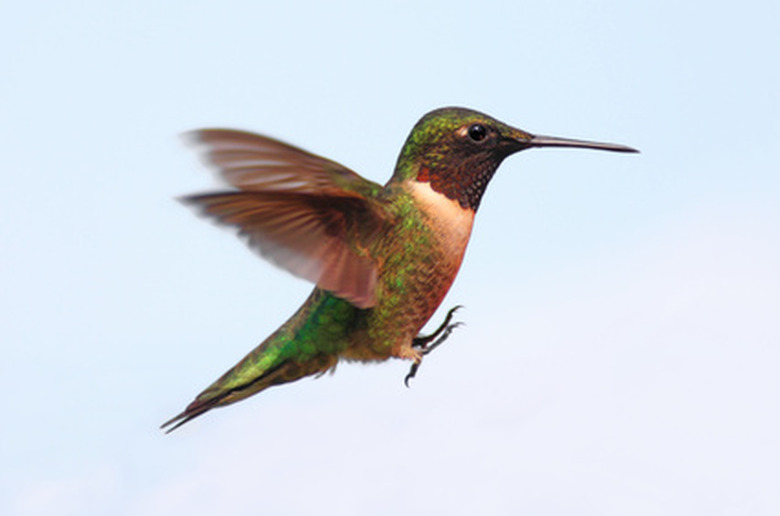Native Illinois Plants That Attract Hummingbirds
One of the most rewarding gardening experiences is to look out your window just as a tiny jewel-like hummingbird flits by to collect a meal of nectar from a blooming plant. Illinois gardeners interested in attracting these delightful little creatures have a wide variety of colorful and fragrant natives from which to choose. Many of them are perennials and will keep hummingbirds returning year after year.
Eastern Red Columbine
Eastern red columbine (Aquilegia canadensis) has striking red and yellow spurred blossoms and drooping yellow stamens. The 2-inch-long flowers appear above lacy blue-green foliage on 2- to 3-foot plants between April and June. Loaded with nectar, their narrow tubed spurs are perfect fits for hummingbird bills.
Growing wild in the shade of Illinois' woods, this member of the buttercup family colonizes easily in the right locations. Plant it in a moist but well-drained, partly shady spot. Neutral to slightly alkaline sandy or sandy loam soil is best. Overly fertile soil will produce foliage-heavy weak-stemmed plants that won't live very long. Full sun will cause leaf burn.
- One of the most rewarding gardening experiences is to look out your window just as a tiny jewel-like hummingbird flits by to collect a meal of nectar from a blooming plant.
- Overly fertile soil will produce foliage-heavy weak-stemmed plants that won't live very long.
Cardinal Flower
Belonging to the bellflower family, cardinal flower (lobelia cardinalis) produces the brilliant red flowers that its name suggests. Hummingbirds, drawn to red and yellow, love this perennial. Plants grow up to 6 feet. With showy spikes of scarlet blooming against their deep green leaves from May to October, they can be a focal point for people as well as hummingbirds.
Cardinal flower, says the Lady Bird Johnson Wildflower Center, grows wild on Illlinois' prairies, pastures, roadsides and stream banks. It tolerates both sun and shade but needs moist to wet soil rich in humus. Loam is best. Propagate cardinal flower by bending its stems to touch wet ground and securing them with stones or twigs until they root.
- Belonging to the bellflower family, cardinal flower (lobelia cardinalis) produces the brilliant red flowers that its name suggests.
- Cardinal flower, says the Lady Bird Johnson Wildflower Center, grows wild on Illlinois' prairies, pastures, roadsides and stream banks.
Crossvine
Another perennial, crossvine (Bignonia capreolata) is a woody member of the trumpet creeper family. Reaching up to 50 feet, it thrives in Illinois' upland and forest floodplains and along the roadsides.When crossvine blooms from March to May, its branches bear clusters of up to five 2-inch reddish-orange trumpet-shaped blooms. Many plants have orange flowers with yellow throats or the reverse. All flower colors are striking against glossy dark green leaves that become reddish purple in autumn for more garden interest.
Crossvine's tendrils allow it to climb trees, solid fences and stone walls without additional support. Plant it in sun–for best flowering–or part shade and moist, well-drained slightly acidic soil. Adding crossvine to your garden will provide hummingbirds with an early spring food source.
- Another perennial, crossvine (Bignonia capreolata) is a woody member of the trumpet creeper family.
- Crossvine's tendrils allow it to climb trees, solid fences and stone walls without additional support.
